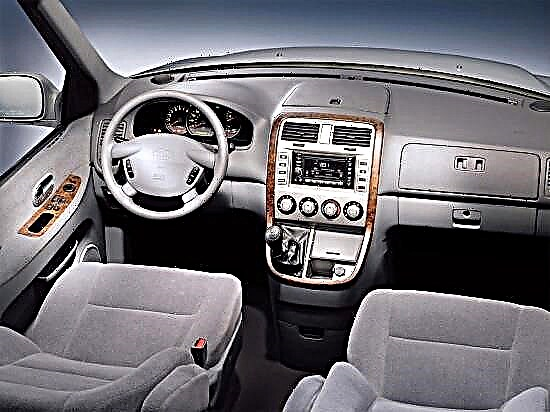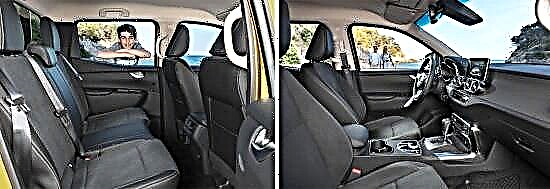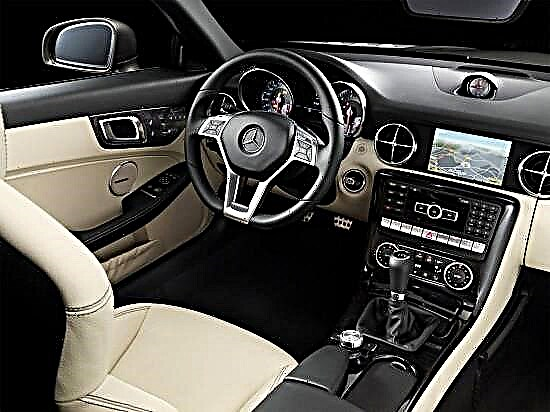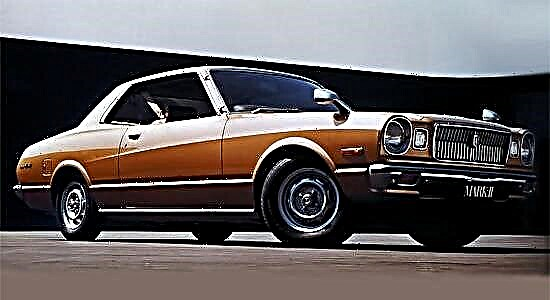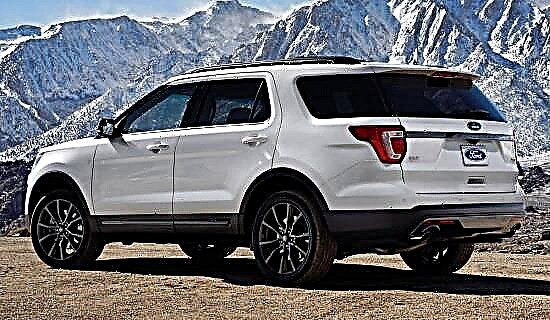The sales of the fifth generation Explorer's version of "Sport" in our country began not so long ago, but until recently the novelty was practically not subjected to independent tests. Now this gap has been closed and we are ready to talk about how the “sporty” seven-seat giant crossover differs from its “civilian version”. Note that the Russian version of Sport, assembled since April 2014 at the Ford Sollers plant in Yelabuga, has undergone testing.

Ford Explorer Sport, as it were, closes the list of available trim levels for the fifth generation of the popular crossover, in fact, being the top-end version. For the first time, the "sports" (exactly like that - in quotes) modification was presented in 2013 at the auto show in New York. Explorer Sport is, in fact, the usual version of the crossover, which differs only in pinpoint modifications, which made it possible to create a "sportiness entourage" around the car. True, it turned out to be very contradictory among American developers, so let's understand it in detail.
The external appearance of the "Explorer" of the Sport version practically does not betray its "sportiness". The developers did not make any global changes, they only slightly retouched the exterior in the simplest ways. Firstly, the radiator grille, moldings, side mirror housings and roof rails have received a black contrasting color. Secondly, the rear LED lights and head optics have got a light tint. Thirdly, the Explorer Sport is equipped with 20-inch alloy wheels with a sporty design. And, finally, fourthly, for the Russian version, the design of the front bumper was slightly changed, where the rubber skirt along the lower edge was replaced by full-fledged metal protection, which turns into protection of the engine crankcase. True, the last change is nevertheless closer to the field of SUVs and does not affect the sportiness of the novelty in any way.

In terms of dimensions, there were no changes and the "sports" modification of the crossover completely repeats the dimensions of the regular version of the Explorer: body length - 5006 mm, wheelbase - 2860 mm, height - 1803 mm, width excluding mirrors - 2004 mm (2291 mm with mirrors) and ground clearance - 211 mm. Logically, the sports version of the car should have received an underestimated ground clearance, but the manufacturer did not dare to turn its crossover into an awkward, oversized sports car, so it retained its full off-road clearance, which is a very useful bonus for Russian car owners.

In the seven-seater saloon, there are even fewer visible changes in the "Sport-modification" than outside. The interior is decorated with the same leather as the Limited equipment and, in general, repeats the level of its equipment. Of the visible differences, we note a pseudo-metal insert above the glove box lid, mats with the words "Sport" and stylistic door sills with illumination. The manufacturer did not install any sports chairs with high-quality lateral support, but in vain. No matter how the number of possible electric adjustments increases and no matter how good the perforated leather is, nevertheless, in the interior of a sports car, which the manufacturer considers this "complete set", one would like to see full-fledged racing seats that give more confidence to the driver and fit perfectly into the concept of "sportiness ". And without them, the interior of the crossover remained ordinary, civil and unimpressive.

As for the trunk, there are also no changes noted here. The basic capacity is kept at 595 liters. If you remove the third row of seats, then the useful volume will increase to 1240 liters, but when the second row is folded, it will increase to an impressive 2285 liters. In this case, the crossover becomes almost a "mini-truck".
Specifications. Now about the most important thing, about the "heart" of the Ford Explorer Sport. A six-cylinder V-shaped Ecoboost engine with a working volume of 3.5 liters is installed under the hood of the crossover. This petrol "monster" is complemented by two turbines and a direct fuel injection system with injectors working at a pressure of 148 bar. Garrett GT15 turbochargers operate in a parallel circuit, have an operating pressure of 0.8 bar and rotors rotate at speeds of up to 170,000 rpm. The "charged" engine was originally capable of developing 360 hp. power at 5700 rpm, and also give out a decent 475 Nm of torque, achieved already at 3500 rpm, but by 2015 it was reconfigured - 345 hp. and 485 Nm at 2500 rpm.
The numbers are impressive, but in reality everything is not as great as it might seem at first glance. During test runs, the Explorer Sport was rather reluctant to pick up speed, strenuously accelerating to the first 50 km / h on the speedometer. Then the dynamics noticeably improved, but in the 6.4 seconds of the starting acceleration from 0 to 100 km / h declared by the manufacturer, the "sports Explorer" could not meet in any of the races. In the fastest case, the acceleration took 8.0 seconds, but in the slower version it took 8.6 seconds. The spread is quite impressive and it is most likely to blame for the six-speed, unhurried "automatic" Ford 6F55, inherited from the "civilian version". Of course, the developers reconfigured it a little, shortening the first gear, but still, this gearbox does not reveal the full potential of a powerful engine, which is a pity. Moreover, they did not bother to equip the "automatic" with the "Sport" mode, having presented in return only a semi-automatic manual mode of switching.
Note that testing of the crossover took place at a tough limit of capabilities and everything was squeezed out of the car that it was capable of and not even capable of. Therefore, it was not possible to carry out a full-fledged measurement of fuel consumption, which, according to the readings of the on-board computer, on some tested specimens went off scale to an unimaginable 40 liters per 100 km. This, of course, is a lot, and in normal operation there will obviously not be such a waste of fuel. If you look at the factory figures, then the average declared gas mileage is indicated at 12.3 liters with a mixed type of driving. The figure is optimistic, but most likely underestimated by 0.7 - 1.0 liters. By the way, the Ecoboost engine has a very pleasant feature - it is completely insensitive to the quality of AI-92 gasoline and “uses” it as readily as the AI-95.
Another point that got a lot of attention during the tests is the suspension. Since the manufacturer positions the Ford Explorer Sport as a full-fledged sports version of the crossover, then the chassis must match this. But what actually happened? But in fact, this suspension is far enough from normal sports samples. Its layout remains the same - MacPherson struts in the front and a multi-link design in the back. Only the springs and stabilizer bushings have undergone changes. The settings of the shock absorbers and the electric power steering have been slightly updated. As a result, the car became more stable on the road, got rid of unnecessary roll in corners and gained noticeably improved handling. But all efforts to make this car "sporty" - canceled out the brakes, which have not changed at all and are completely unable to cope with their work at full loads. Of course, in the usual mode of city driving this problem can not be feared, but with dynamic and aggressive driving on the race track, the brakes overheat already towards the end of the first lap of the medium-distance track, and then completely refuse to work. Whatever one may say, but for a sports car such behavior is simply indecent.
Summing up, we can state that the name "Sport" is just a clever marketing ploy that allows increasing the popularity of the top-end configuration of the Explorer crossover. This car has nothing to do with true sportiness, but it is quite ready for use as a reliable city car.
Note that in the "Sport" package, this car is additionally equipped with: heated and ventilated front seats, electric adjustment of the front passenger seat in 10 directions and a blind spot monitoring system.
The price of the 2017 Ford Explorer Sport SUV in Russia starts at 3,319,000 rubles.

